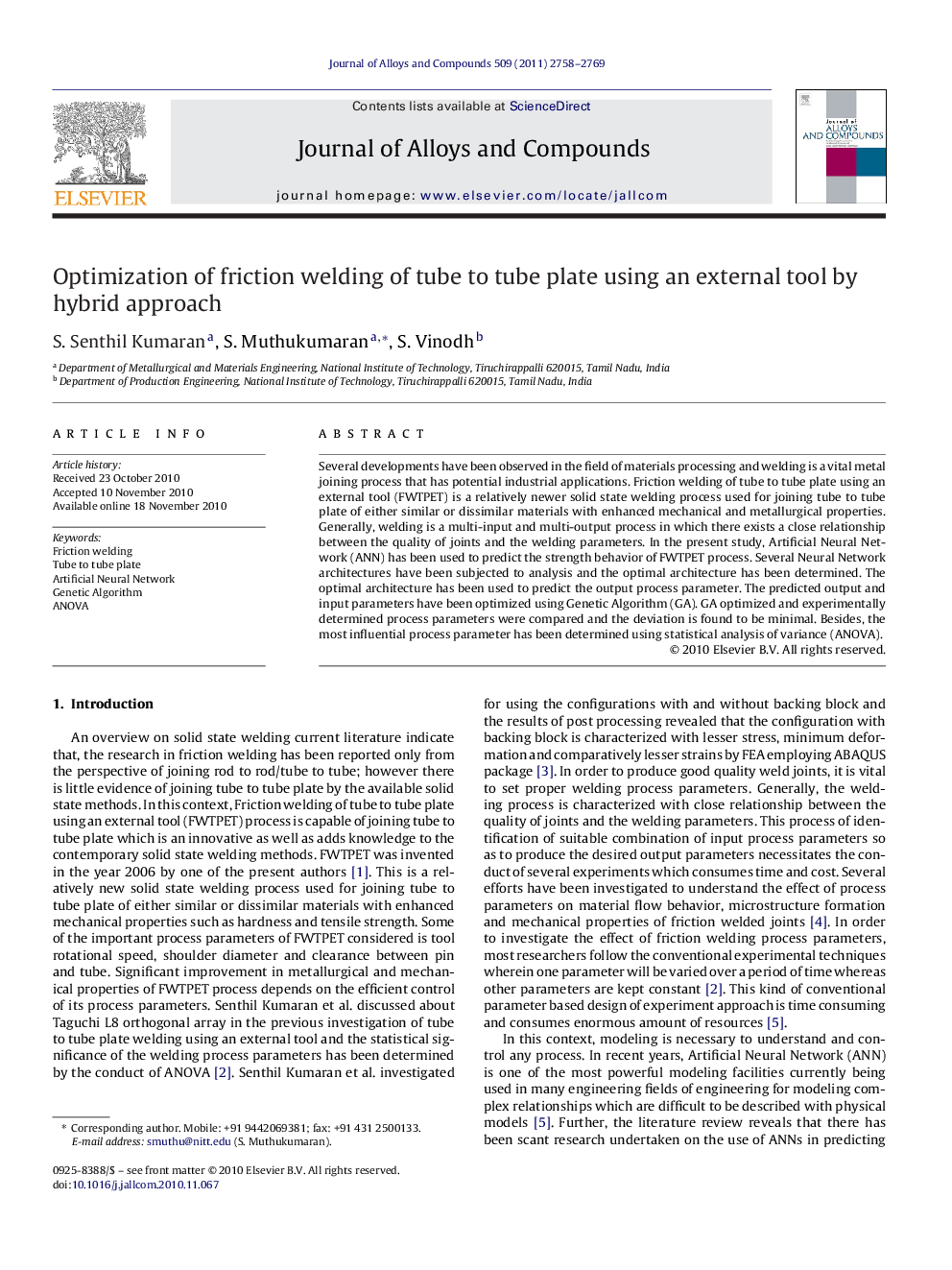| Article ID | Journal | Published Year | Pages | File Type |
|---|---|---|---|---|
| 1617622 | Journal of Alloys and Compounds | 2011 | 12 Pages |
Several developments have been observed in the field of materials processing and welding is a vital metal joining process that has potential industrial applications. Friction welding of tube to tube plate using an external tool (FWTPET) is a relatively newer solid state welding process used for joining tube to tube plate of either similar or dissimilar materials with enhanced mechanical and metallurgical properties. Generally, welding is a multi-input and multi-output process in which there exists a close relationship between the quality of joints and the welding parameters. In the present study, Artificial Neural Network (ANN) has been used to predict the strength behavior of FWTPET process. Several Neural Network architectures have been subjected to analysis and the optimal architecture has been determined. The optimal architecture has been used to predict the output process parameter. The predicted output and input parameters have been optimized using Genetic Algorithm (GA). GA optimized and experimentally determined process parameters were compared and the deviation is found to be minimal. Besides, the most influential process parameter has been determined using statistical analysis of variance (ANOVA).
Research highlights▶ Friction welding of tube to tube plate using an external tool (FWTPET) is a relatively newer solid state welding process used for joining tube to tube plate of either similar or dissimilar materials with enhanced mechanical and metallurgical properties. FWTPET was invented in the year 2006 and patent was granted in the year 2008 by one of the present authors. ▶ The optimal architecture derived from ANN has been used to predict the output parameters. The predicted output parameters from ANN and input parameters have been optimized using GA. The optimized parameters obtained from GA have been compared with experimental values. There is a minimal deviation between theoretically optimized and experimentally obtained process parameters. ▶ Statistical technique ANOVA has been employed to determine the percentage contributions of the process parameters; speed possess highest contribution (57.95%) followed by the shoulder diameter (36.33%) and pin clearance (3.99%).
